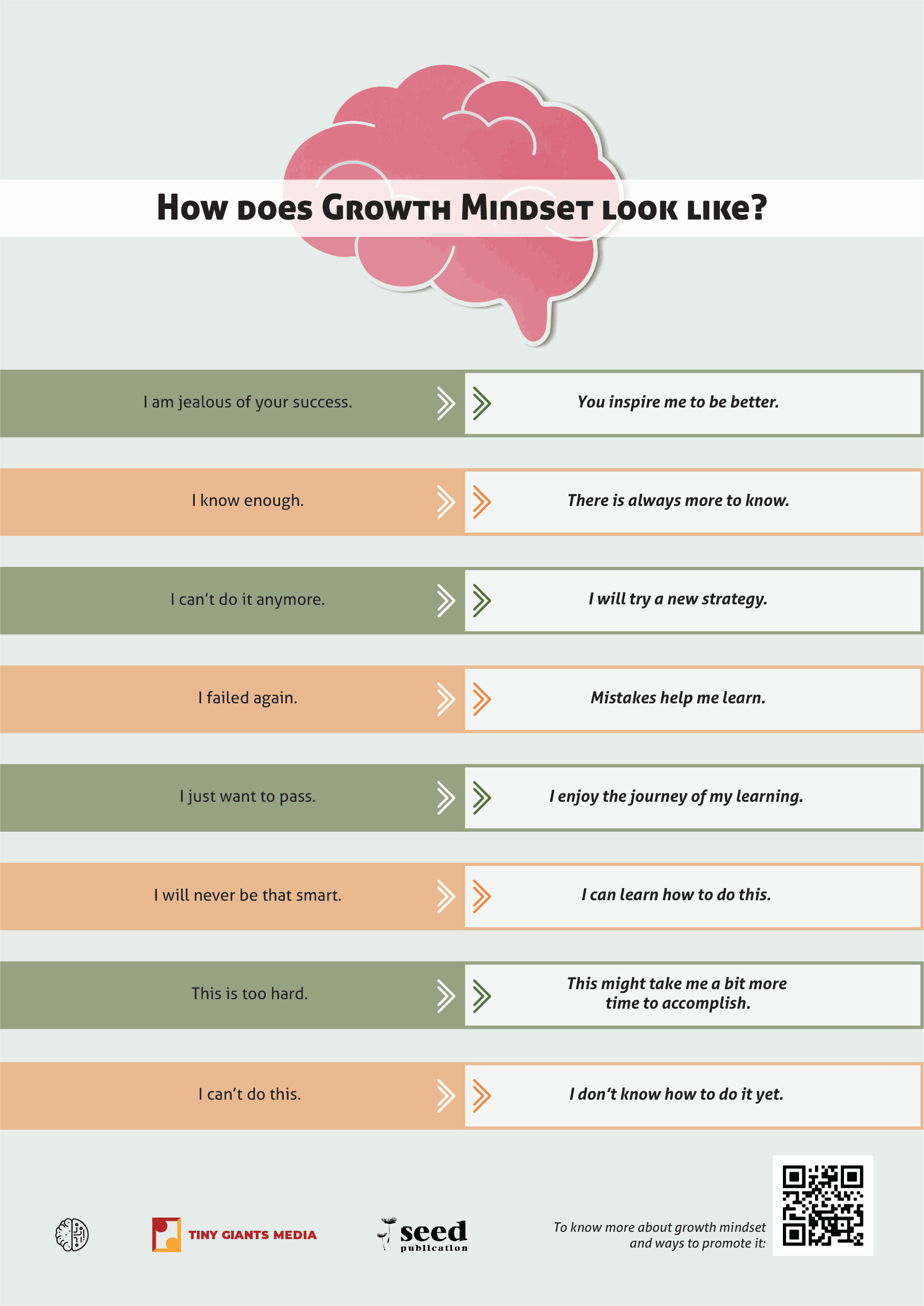Growth mindset and how to develop it.
A mindset is closely linked to self-perception or “self-theory” that people hold about themselves. Believing that you are either “intelligent” or “unintelligent” is a simple example of a mindset. People can be aware or unaware of their mindsets but this can have profound effects on learning achievement, skill acquisition, personal relationships, professional success, and many other dimensions of life.
The concept of a growth mindset was developed by psychologist Carol Dweck and popularised in her book, Mindset: The New Psychology of Success. In recent years, many schools and educators have started using Dweck’s theories to show how they teach students. Dweck’s educational work centres on the distinction between “fixed” and “growth” mindsets.
To briefly sum up the findings: Individuals who believe their talents can be developed through hard work, good strategies, and input from others have a growth mindset. They tend to achieve more than those with a more fixed mindset who believe their talents are innate gifts.
However, it’s not easy to attain a growth mindset. One reason why is because we all have our own fixed-mindset triggers. When we face challenges, receive criticism, or fare poorly compared to others, we can easily fall into insecurity or defensiveness, a response that inhibits growth.
To remain in a growth zone, we must identify and work with these triggers.
Ask questions and reflect more
Questions are the building blocks of learning when you think about them. Whenever you fail, reword your questions. Ask yourself “what could I do differently”, or “what worked and what didn’t?” This strategy helps with kids so they’re not working hard and getting similar results. This applies to adults as well.
Be hungry for knowledge
One of the wisest man in history once said, “I Only Know One Thing, And That Is I Know Nothing” – Socrates. When you think you know nothing, curiously, you crave for more information curiously. But, when you think you know everything, you brain stops looking for more information.
Persistence and Effort
Part of learning is failing and getting back up and trying again. It’s persistence at the core, but you do need to be cautious. Beware not to fall into a loop where you’re doing one thing over and over again and getting nowhere. Instead, make sure that you are moving forward with a purpose.
How you get to that purpose is up to you. It could be looking for a new method of execution, looking at yourself and what you could change.
It’s important that while putting in the work, we are praising our efforts instead of our abilities. For example, don’t praise your ability being great at your job. Praise the effort and devotion you put into your craft instead.
Enjoy the Process over the Result
While the end results are great, that’s not the reason we pursue learning and growth. The end results are fleeting and often, people who do something for the sake of end results find themselves stalled. They’re stuck and not sure what to do next. Instead, when we value the process and find joy in putting the effort and learning, we begin to grow more that way.
Developing Growth Mindset is a hard work, but individuals and organizations can gain a lot by deepening their understanding of growth-mindset concepts and the processes for putting them into practice. It gives them a richer sense of who they are, what they stand for, and how they want to move forward.
We Are Seed Publication!
We make enriching posters for condominiums in Malaysia, building communities and spreading insights that matter to people.
More Articles:


